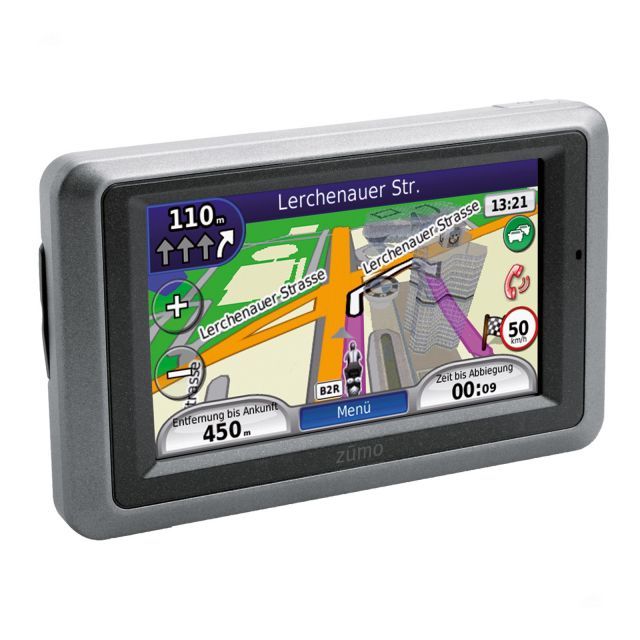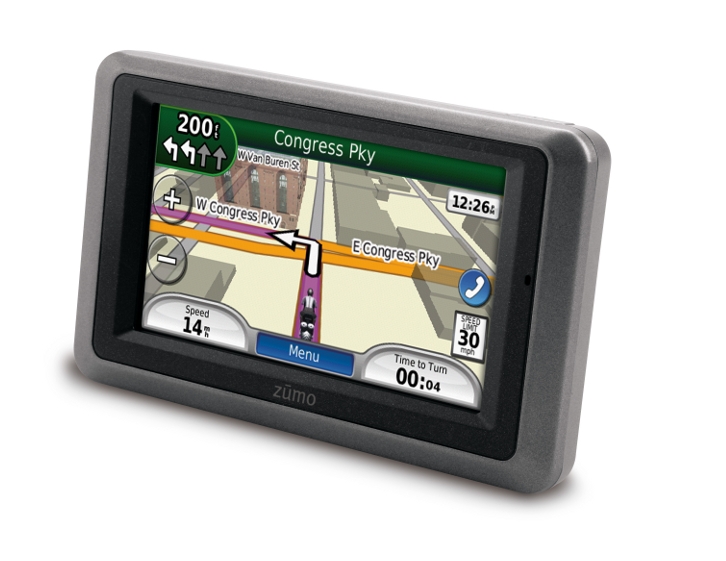


I repeated the initial pairing attempt - with the same result.Įven with the system restored, it refused to pair with any of the sets on hand, even though I knew it worked with the Cardo Q2 system (review), as that is what the club member was using.

Five days later I had my own unit to try and break. Strangely enough, this experience finally drove me to order a zūmo 660 for myself. Note: this deletes all user-entered information and all original (factory) settings are restored. Keep the finger pressed on the screen until the query message appears, touch “Yes” to clear all user data. Resetting the zūmo 660 didn’t work and it finally took a “Clearing User Data” reset to recover the system, with some resultant loss of data.Ī “Clearing User Data” reset is engaged by holding a finger on the lower-right corner of the screen while turning on the device.
#GARMIN ZUMO 660 DRIVERS BLUETOOTH#
This initial effort ended quickly when the Bluetooth feature disabled itself after my initial pairing attempt with the Biker Com Control Box (review) and refused to come back. My initial experience with a zūmo 660 was not exactly positive.Īnxious to get an early look at one, I had borrowed a fellow BMW club member’s unit for a couple of days earlier this summer, just to see how/if it was going to work with the Bluetooth Communications Systems that I was evaluating at the time. The kit also includes preloaded street maps for North America.
#GARMIN ZUMO 660 DRIVERS INSTALL#
Opening up a zūmo 550 box was a give-away in determining its intended use opening up a 660 kit does nothing to change that.Īll the basic bits-n-pieces needed to install the device on most motorcycles and get the user navigating out of the box are still there.įrom a user perspective, some key features of the zūmo 660 include lane assist, 3-D building view, photo navigation, Where Am I?, Bluetooth wireless, vocalization of street names and optional FM traffic alerts. Leveraging newer technologies have resulted in a more modern device with lots of enhancements, albeit more evolutionary rather than revolutionary.īuilding it to withstand the rigors of motorcycle use makes it unique.Īnyone familiar with navigation devices, especially those built for motorcycle use will quickly recognize the Garmin zūmo 660 for what it is. Garmin’s extensive nüvi GPS line is relatively mature and it is upon this baseline that the zūmo 660 is built. In the end however, we were presented with the zūmo 660. Trying to find out and figure out what Garmin was up to proved to be somewhat frustrating. Last year there was a fair amount of confusion over whether the zūmo line was going to be extended or if something from the Garmin nüvi product line was going to be pushed forward. They were truly made for life on the road - either mounted on a motorcycle, used in a four-wheeler or dismounted for portability.īut in fast-forwarding to the latter part of 2009, the zūmo line (or rather some of its features, depending on user requirements), became limited and ‘long in the tooth’.Īnd with the 450 discontinued, the 550 remained the only motorcycle-specific model offered by Garmin in a continually expanding market. In very short order the 550, along with one or two other competitors, became the navigation standard for motorcyclists and so many other powered transportation enthusiasts and all for good reason.īetween the box contents, the device features and an ability to survive prolonged periods of rough use, the zūmo models remain complete packages. Garmin touted the zūmo 550 to an eager audience as having been designed specifically for ‘bikers”, aka motorcyclists. The zūmo 660 is the latest in the Garmin motorcycle GPS lineup for almost three years, the zūmo 550, later joined by its now discontinued younger 450 sibling, occupied this unique user territory. The extremely popular zūmo (Spanish for “juice” or “squash” i.e., to get the most out of something) products are marketed under Garmin’s “On the Road” category that covers automotive, motorcycles, trucking and traffic services. Their innovative and comprehensive product listing provides something for virtually every application and lifestyle imaginable and their user base is truly global in nature. Garmin has come a long way since an informal beginning in 1989, although its goal, “to create navigation and communication devices that can enrich our customer’s lives” has remained unchanged.


 0 kommentar(er)
0 kommentar(er)
